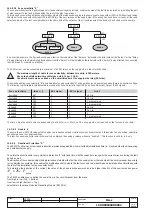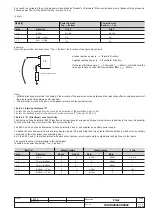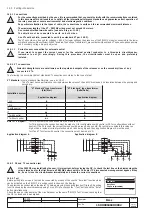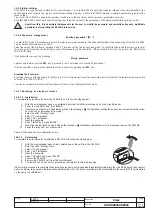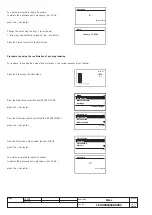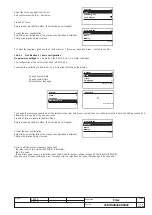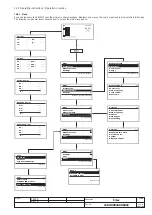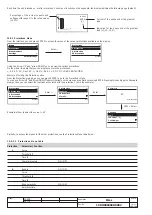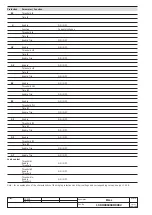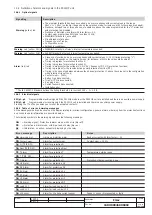
L2234
Emax
94/158
Model
Scale
Page No.
Doc. No.
Apparatus
1SDH000460R0002
L2778
14.3 Putting into service
14.3.1 Connections
For the connections provided by the user, it is recommended that you comply strictly with the recommendations contained
in this document.This will enable us to satisfy all the international reference standards and guarantee perfect operation of
the relay even under severe environmental and electromagnetic conditions.
Pay particular attention to the types of cable, the connections to earth and the recommended maximum distances.
The maximum length of the VT - PR120/V wiring must not exceed 15 meters.
Use corded shielded two-wire cable (see note A to par. 11.2.2).
The shield must be connected to earth on both sides.
Use VTs with a shield, connected to earth (see standard VT par. 14.3.2).
The VTs should only be used for voltages > 690V; for lower voltages the presence of the PR120/V module connected to the lower
or higher busbars will be sufficient. With VT enabled, the Voltage Transformer I
n
present data will be set and VT’s phase-to-phase primary
and secondary voltage properly adjusted.
14.3.1.1
Current sensor connection for external neutral
If you want to connect the current sensor for the external neutral conductor to a three-pole circuit-breaker,
remember to set I
n
N. accordingly. During this procedure, the circuit-breaker must be open and preferably
isolated.
14.3.2 VT connections
Dielectric strength tests are not allowed on the inputs and outputs of the releases or on the secondary lines of any
connected VTs.
The following is a summary table of standard VT connections according to the type of plant.
VT Standard
: Single standard transformers, see par. 15.1.7.
The VTs must have a performance coming between the values of 10 and 20VA inclusive, 4 kV insulation between the primary and
secondary.
Note for B diagram:
-
for TN-C systems the connection must be made to PEN;
-
for TN-S systems the connection must be made to N for configurations with neutral or PE for configurations without
neutral; if the PE is used, the current thereon could be around a dozen mA. If a customer considers this value too
high or has a residual current protection which risks being tripped, then application diagram A must be used.
-
for IT and TT systems with neutral, the connection must be made to N.
N
Application diagram B
Application diagram A
"VT Standard" type transformer
(Star/Star)
"VT Standard" type transformer
(Delta/Delta)
Installation system
Application diagram Application diagram
TN-C
B
A
TN-S
B
A
IT with neutral
B
A
IT
n.c
A
TT with neutral
B
A
TT without neutral
n.c
A
14.3.3 CS and TC connection test
If the PR123/P was installed by the user, it is important, before closing the CB, to check the last line on the display when the
relay is turned on for the first time via a PR030/B battery unit. No CS and/or TC disconnected messages must appear; if they
do, do not close the circuit-breaker immediately and make the correct connections.
14.3.4 Test
Before putting into service, a test can be conducted by means of the specific "Auto test" function which
can be activated on the PR123/P. A positive result is shown on the display.
Then a test can be conducted on the whole TC chain, again using the specific function (Trip test). A positive
result is shown by the circuit-breaker opening.To run a Trip Test, press the “i Test” button and the “Enter”
button simultaneously.
Check the open or closed state of the circuit-breaker on the same "PR123/P Test" screen, checking that
the CB is closed and de-energized.
1/6
CB open
Auto Test
Trip Test (disabled)
CB status
Test

